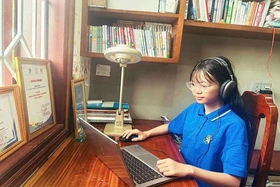4buf4bq6w7l14bq2R+G7r+G7luG7luG7jXThu5Lhur3hurzGoEfDgnThu6Flw4Lhu6/hurbDgsOJ4buaR3Xhu6/hu5bhu5Lhurzhu5Thu6/GoOG6vMONSXXDieG7lMONSHXhu5bhu6/hurbhu5TDguG6snVH4buvSeG6snXDjcOJdcOp4bua4buvSeG6uHXhur3hu5Thurzhu5l1ZeG7r+G7lMagdcO5dS11ZcOC4buv4bq2w4J14bq84buWdeG7r3Xhu5bhurrhu6/hu5TDguG6snXhurLDguG7luG6vOG7lMOC4bufL+G6usO54buh4buf4buSdeG6tkfhu6/hu5bhu5bhu4104buSMsOC4buv4bqydOG7oeG6veG6usOC4buUw4J14buv4buUw4J1w41JR8WodeG7r3XDicOC4bukdeG6suG7r8Wo4buWdUfDgsOJxqB14buaScag4bq8R3U54buaR8Wo4buXdeG7pOG6usOCSXXGoOG6usOCdeG6tsOCScag4buU4buvR3Xhu5Lhu5TDjcOZ4bq8SeG6tsOCdcONw4l1w6nhu5rhu69J4bq4deG6veG7lOG6vHXhu6ThurxHR3Xhurjhu5TDgsOCxqB14buvdeG7lsag4buUw4Lhu69IdcONw4l14buSw4LDjeG7kkfDgnXhu6/hurbhu5TDjeG7luG7lnXhu4vhurzDgsagSeG7r0h1xqDDjXXhu5Lhu6/FqHXGoOG7lOG6vOG6sOG7msagw4J1xqDDjXXGoOG6usON4buWw4J14buk4bq6w411R+G7r+G6vOG6snXhurLDjeG7pEl1xqDhurrDguG6vOG7lHVH4bq8w5nDguG7lnXDicON4buUdcag4bq6w4J14buSw4Lhu6/hurbDgnXDjcOJdcag4bq6w4J1SeG7r8ag4bq8w41JdcONSXXGoOG6usOCdcON4bq24bq24buv4buW4bq8w41JdcONw4l1xqDhurrDgnXhu4nhu6/hu5R1M0nDmeG7r0fhurzhurLhu5Z14buvSeG6snXDoOG7r+G7lMagxajhu5Thu5Z1LOG7r8Wo4buXdeG7pOG6uuG6vOG6tuG6unXDieG7r0dH4buWdcONSXU54buaR8WodeG7peG7q8ahdeG6veG6usOCdeG6uOG7lOG7r8ag4bq8xqDhu5rhurLDgnXhu6ThurxHR3XhurDDguG6tsONSMOCdUjDjeG7lMOCdUnDjcagw4Lhu6TDjeG7lMag4bq6xah14buv4buWdeG7i+G6vMOCxqBJ4buvSOKAmeG7lnUww4Lhu5bGoOG6vMOZ4buvR3XDicON4buUdWXDguG7r+G6tsOCdeG7pOG6vEdHdeG6sMOCdcON4buU4bq44buvSeG6vHrDguG6snXDicON4buUdcag4bq6w4J1w4nhurzhu5Thu5bGoHXGoOG6vEjDgnXhurxJdcag4bq6w4J14buS4buUw43DmeG6vEnhurbDgnXhu6/GoHXGoOG6usOCdeG7luG7r0jDgnXGoOG6vEjDgsahdTDhu5TDjUh1xqDhurrhurzhu5Z14bq64bq84buWxqDDjeG7lOG6vOG6tuG7r0d14buSw43hurxJxqDhu5d1xqDhurrDgnXhurDDgkdH4buWdcONw4l14bq44buU4buvxqDhurzGoOG7muG6ssOCdeG7r0nhurJ14buUw4JIw4JI4bqw4buU4buvSeG6tsOCdeG6vEl1OeG7mkfFqHXhu6ThurxHR3Xhurbhu6/hu5Thu5TFqHXGoOG6usOCdeG7pOG6vOG7luG6unXDicON4buUdeG7ksOC4buv4bq2w4J1xqDDjXXhu5ThurxJ4bq4dcOJ4bua4buUxqDhurrDguG7lOG7l3VJw43GoHXDjUlHxah14bq8SXXhu4vhurzDgsagSeG7r0h14bqw4buaxqB14buvR+G7lsONdeG6vEl14buS4buv4buUxqDhu5Z1w43DiXXGoOG6usOCdeG7pMON4buUR+G6snXGoOG6uuG7r8agdeG7r+G7lMOCdeG7lsag4bq8R0d1w4JJ4bq44buaR8OJw4LhurJ14bq8SXXhu6Thu6/hu5R14bqww41I4bqw4buWxqHhu58v4buS4buh4buf4buSdeG6tkfhu6/hu5bhu5bhu4104buSOsON4bqyxah04buh4buf4bq8SOG6uHXhurZH4buv4buW4buW4buNdOG6vDvDgknGoMOC4buUdHXhu5bhu5Thurbhu4104bq6xqDGoOG7kuG7luG7mS8v4bq2xqHhurDhu6/DjeG7mOG7muG7r0nhurjGoOG7lOG6vMahw5lJL+G6ssOC4buWRsagw43hu5IvScOC4buk4buWL+G7pcWp4bul4bupL8O5w7nFqeG6suG7peG7pcO6xanFqcWp4butxqDhu6nhu6vDucWpR+G7pS3hurrDjeG7r+G6vEnhu69IxqHhu6TDguG6sOG7knR14buvR8ag4buNdGXDguG7r+G6tsOCw4nhu5pHdeG7r+G7luG7kuG6vOG7lOG7r8ag4bq8w41JdcOJ4buUw41IdeG7luG7r+G6tuG7lMOC4bqydUfhu69J4bqydcONw4l1w6nhu5rhu69J4bq4deG6veG7lOG6vOG7mXVl4buv4buUxqB1w7l1LXVlw4Lhu6/hurbDgnXhurzhu5Z14buvdeG7luG6uuG7r+G7lMOC4bqydeG6ssOC4buW4bq84buUw4J0dS/hu6Hhu58v4buS4buh4buf4buSdeG6tkfhu6/hu5bhu5bhu4104buSO+G7r+G7ksag4bq8w41JdOG7oeG6oeG6uOG7msWow4JJdSzhu5rFqHU74bq64bq8w4JJdeG7neG6tsOCScagw4Lhu5Thu6N14buvSeG6snXhuqHhurjhu5rFqMOCSXXEqeG7muG7r0l1w6Hhu69J4bq6deG7neG7lOG6vOG6uOG6usag4bujdeG7lMOC4bq24buvR0d1xqDhurrDguG6vOG7lHXhu5bGoMON4buU4bq8w4Lhu5bGoXVl4bq6w43GoMON4buZdTLGoeG6oeG7ny/hu5Lhu6Hhu5/hu5J14bq2R+G7r+G7luG7luG7jXThu5I6w43hurLFqHThu6Hhu67Dicagw4Lhu5R1xqDhurrDgnVl4buv4buU4bq84buWdWXDguG7r+G6tsOCdeG7ruG6tuG6tsON4buU4bqy4buWdeG7pOG7r+G7lnXhu5bhurzhurhJw4LhurJ1w41JdTnhu69J4bua4buv4buUxah14bul4bur4buXdcO54but4bur4bun4buXdUjhu6/hu5RG4bq8SeG6uHXhu691w5nhurzhurbGoMON4buUxah1w4nDjeG7lHXGoOG6usOCdeG7i+G6vMOCxqBJ4buvSMOC4buWw4J14buSw4LDjeG7kkfDgnXhu69J4bqydcag4bq6w4J14bq8Scagw4Lhu5RJ4buvxqDhurzDjUnhu69HdeG7lsONR+G6vOG6suG7r+G7lOG6vMagxah1SMONw5nDgkjDgknGoHXGoOG6uuG7r8agdcag4bq6w4J14bq2w43hu5pJxqDhu5TFqHXhu6Thu6/hu5Z14bq8ScOZw41Hw5nDguG6snXhurxJdeG7r0nhurJ14buvSXXDgknhurJ1w43DiXXGoOG6usOCdeG7pOG7r+G7lHXhurxJdeG7i+G6vMOCxqBJ4buvSHXhurbDjUnDieG6vOG7lEjhurxJ4bq4dcag4bq6w4J14buW4bua4bq24bq2w4Lhu5bhu5Z1w43DiXXGoOG6usOCdUnhu6/GoOG6vMONSeKAmeG7lnXhu5TDguG7luG6vOG7lsag4buvSeG6tsOC4buXdcOp4bua4buvSeG6uHXhur3hu5Thurx1w4nDjeG7lEjDguG6snXGoOG7pMONdeG7lMOC4bq44bq8w41J4buW4buZdcag4bq6w4J1R+G6vOG6sMOC4buU4buvxqDDguG6snXhu6/hu5TDguG7r3Xhu6/hurbhurbDjeG7mknGoOG6vEnhurh1w4nDjeG7lHVJw4Lhu6/hu5RHxah14buxxrDDtXXDjcOJdcag4bq6w4J14buv4buUw4Lhu6914buvSeG6snXGoOG6usOCdeG7lMOC4buWxqB14bq84buWdcag4bq6w4J1xqDDgkjhu5LDjeG7lOG7r+G7lOG6vEfFqHXDgknDgkjFqC3DjeG6tuG6tuG7muG7kuG6vMOC4bqydXrDjUnDguG7lnXhu50y4buv4bq8dcOh4buvSeG6uHXhurLhurzhu5bGoOG7lOG6vOG6tsag4buXdcOp4bua4buvSeG6uHXhur3hu5Thurx1xqDDjeG7pEnhu5bhurrhurzhu5J14buvSeG6snXDieG6vMOZw4J14bq2w41ISOG7mknDguG7lnXDjcOJdeG6veG7lOG6vMOC4buadWXhurrDjUnhurh1LOG6vOG7lsag4buU4bq84bq2xqDhu6PGoXUzSXXGoOG6usOCdUfhurzhurDDguG7lOG7r8agw4LhurJ14buv4buUw4Lhu6/hu5d14buSw4LDjeG7kkfDgnXDguG7r+G6uMOC4buUR8WodeG7pMON4buURsOC4bqydcagw4114buUw4LhurDhu5rhurxH4bqydcag4bq6w4Lhurzhu5R14bq6w41Iw4JH4buvSeG6ssahdTNJdeG6tsONScag4buU4buv4buWxqDhu5d14bq8SXXGoOG6usOCdcagw4JI4buSw43hu5Thu6/hu5ThurxHxah1w4JJw4JIxagtw43hurbhurbhu5rhu5LhurzDguG6snV6w41Jw4Lhu5bhu5d1xqDhurrDgnXhu6/hu5RIxah14buvSeG6snXhu5LDgsON4buSR8OCdcONw4l1w6nhu5rhu69J4bq4deG6veG7lOG6vHXhurbDjUnGoOG6vEnhu5rDguG6snXDieG6vOG6uOG6usag4bq8SeG6uHXhu6/hurjhu6/hurxJ4buWxqB1xqDhurrDgnXhu6/hu5RIxah1w43DiXXGoOG6usOCdeG6ucOC4buS4bua4bqwR+G6vOG6tnXDjcOJdeG7i+G6vMOCxqBJ4buvSHXhu53hurvhu6/hurzhurjDjUl14buS4bua4buSw4LGoHXhu6/hurJI4bq8SeG6vOG7lsag4buU4buvxqDhurzDjUnhu6N14buaScag4bq8R3XGoMONxqDhu69HR8WodUfhurzhurDDguG7lOG7r8ag4bq8SeG6uHXGoOG6usOCdeG7r+G7lMOC4buvdcONSXXDoOG7r+G7lOG6tuG6unXDueG7reG7l3XDueG7reG7q8awxqHhu58v4buS4buh4buf4buSdeG6tkfhu6/hu5bhu5bhu4104buSM0nGoMOC4buU4bq94bq8xqBHw4J0deG7lsagxahHw4Lhu410xqDDguG7psagLeG7r0fhurzhurhJ4buZdeG6tsOCScagw4Lhu5Thu5V04buh4buf4buWxqDhu5TDjUnhurjhu6Hhur3hurrDgnVH4buv4buWxqB14buuSMOC4buU4bq84bq24buvSXXhu5LhurxHw43GoHXhurbhu6/hu5LGoOG7muG7lMOC4bqydeG6vEl1w6nhu5rhu69J4bq4deG6veG7lOG6vOG7ny/hu5bGoOG7lMONSeG6uOG7oeG7ny/hu5Lhu6Hhu5/hu5J14bq2R+G7r+G7luG7luG7jXThu5I6w43hurLFqHThu6Hhu7HDuS3FqMOC4buv4buULcONR+G6snXhuqHhurjhu5rFqMOCSXUs4bua4bq2deG6vcON4buvSeG7l3Xhu6ThurrDjXXhu5rhu5bDguG6snXGoMONdeG6sMOCdcag4bq6w4J1R8OC4buv4bqyw4Lhu5R1w43DiXXGoOG6usOCdeG7rknGoOG6vC3hu6/hurzhu5Thurbhu5Thu6/Dicagdcagw4Lhu69IdcONw4l14bq94buU4bq8w4Lhu5p1ZeG6uuG7msON4bq2dTvDjUhI4buaScOC4buXdeG6veG7lOG6vMOC4buadWXhurrDjUnhurh1LOG6vOG7lsag4buU4bq84bq2xqDhu5d14buWxqDhurxHR3XDmeG6vMOZ4bq84bqyR8WodeG7lMOCSMOCSOG6sMOC4buU4buWdcag4bq6w4J1w4nDgsOCR+G6vEnhurh1w43DiXXhu5bhurrDjcONxqDhurxJ4bq4deG6ssON4bukSXXhu69JdeG7rkjDguG7lOG6vOG6tuG7r0l14buEw4LGoHXhurxJdcag4bq6w4J14buS4buv4bqy4bqyxah1w4nhurzDgkfhurJ1w43DiXU74buvw411MsWodeG7i+G6vEdH4buv4bq4w4Lhu5d14buE4bua4buWxqB14buvdcOJw4Lhu6R14bq6w43hu5rhu5Thu5Z14bqww4LDicON4buUw4J1xqDhurrDgnVl4buv4buU4bq84buWdWXDguG7r+G6tsOCdeG7ruG6tuG6tsON4buU4bqy4buWdcONw4nDieG6vOG6tuG6vOG7r0dHxah1xqDDjcONRnXDgsOJw4nDguG6tsag4buXdeG6tsOC4buv4buW4bq8SeG6uHXDieG6vOG7lMOCdcONSXXhu69HR3XhurDhu6/GoMagR8OCw4nhurzDgkfhurLhu5bGoeG7ny/hu5Lhu6Hhu5/hu5J14bq2R+G7r+G7luG7luG7jXThu5I6w43hurLFqHThu6HDoMOCSMON4buU4bq8w4Lhu5Z1xqDDjcONRnXhur3DjeG7r0l14bqw4buv4bq2RnXDjcOZw4Lhu5R1xrDDunXFqMOC4buv4buU4buWdeG7r+G6uMONdcagw411xqDhurrDgnXDieG6vMOCR+G6suG7lnXDjcOJdTvDjXXhu4vhurxHR+G7r+G6uMOC4buXdeG7pOG6uuG6vOG6tuG6unXhu6Thu6/hu5Z14bq2w43DmcOC4buUw4LhurJ14bqwxah1xqDhurrDgnVI4bua4bqy4bqyxah14buvxqBIw43hu5bhu5LhurrDguG7lMOCdeG6vEl1OeG7r0nhu5rhu6/hu5TFqMahdeG7rsagdcWpdeG7kkh1w41JdTnhu69J4bua4buv4buUxah14bul4bur4buXdcO54but4bur4bun4buXdeG7r3XDquG6u3Xhu67hurzhu5R1MMON4buU4bq2w4J1MMWpOXXhu5LhurxHw43GoMOC4bqydeG6sMWodcOg4buv4buEw43hu5R1ZeG6uuG6vEdH4bq84buSdeG7rsahdWHhurzDgknGoHpHw4Lhu5R14buvxqDGoOG7r+G6tkbDguG6snXGoOG6usOCdSxhOnXhu6/hu5TGoOG6vEdHw4Lhu5TFqHXhurDhu6/GoMagR8OCw4nhurzDgkfhurJ14buvxqB14buL4bq8w4LGoHVqw4JJdeG7pOG6uuG7r+G7lMOJdeG6u8ON4buaxqDhurp1w43DiXU74bua4buvdeG7i+G6vMOCxqDhu5d14buvdeG6tsON4buv4buWxqDhu69Hdcagw43hu6RJdeG6vEl1MeG6vMONdcOh4bq8SeG6unUs4bq84buWxqDhu5ThurzhurbGoMah4bufL+G7kuG7oeG7n+G7knXhurZH4buv4buW4buW4buNdOG7kjrDjeG6ssWodOG7oXThur3hurrDgnXhu5LDjeG7luG6vMag4bq8w41JdcONw4l1xqDhurrDgnU5w4LGoHXDieG6vOG6uOG6usagw4Lhu5R1MMWpOXXhu6Thu6/hu5Z1w41JR8WodcO5xrB14bqyw4Lhurjhu5TDgsOC4buWdcagw411xqDhurrDgnVHw4LDicagdcONw4l1SMWodeG7rknGoOG6vC3hurbhu5Thu6/Dicagdcagw4Lhu69IxqF1M3XhurxISMOC4bqy4bq84buvxqDDgkfFqHXDjeG7lOG6ssOC4buUw4LhurJ14buvR0d1xqDDguG7r0h1SMOCSOG6sMOC4buU4buWdcagw4114buW4bq6w43Djcagdcag4bq6w4J1OcOCxqDGoXXhur3hurrDgnUwxak5deG7pOG7r+G7lnXhu5bhurrDjcagdeG6ssON4bukSXXhurxJdcag4bq6w4J1w4nhurzhu5Thu5bGoHXhu5TDjeG7mknhurLhu5d14bqww4LhurxJ4bq4deG6tsONw5nDguG7lMOC4bqydeG7pOG6vMag4bq6dcOJ4bq84buUw4J1R+G6vEbDgnXhu6914bq44bq84buvScagdcagw43hu5Thurbhurrhu5d14buvSeG6snXGoOG6usOCSXXhu5bGoOG7r+G6uOG6uMOC4buUw4LhurJ14bqyw43hu6RJdeG6vEnGoMONdcag4bq6w4J14bqy4buaScOC4buWdcONw4l1MuG7r3Xhur3hu6/FqHXhu4vhurxHR+G7r+G6uMOCdeG6vEl14bq94buU4bq8w4Lhu5p14buuSXU7w41ISOG7mknDgsahdeG6veG6usOCdcag4bukw4114buS4bq8R8ONxqDhu5Z14bqyw4Lhu5JHw43FqMOC4bqydcag4bq6w4Lhurzhu5R14buS4buv4buU4buv4bq24bq64buaxqDDguG7lnXGoMONdcOC4buW4bq24buv4buSw4J1w4nhu5TDjUh1xqDhurrDgnU5w4LGoMahdeG6o0nDgnXDjcOJdcag4bq6w4J1xqDhu6TDjXXhu5LhurxHw43GoOG7lnXhurLhurzDguG6suG7l3XGoOG6usOCdcONxqDhurrDguG7lOG7l3Vl4bq64bq8R0fhurzhu5J14buuR0fDgkl1YeG6vMOCScagekfDguG7lOG7l3Xhu6Thu6/hu5Z14bq8SeG7hOG7muG7lMOC4bqydeG6vEl1xqDhurrDgnXGoOG6uuG6vOG6uOG6unXhu69J4bqydeG7lOG7r+G6vOG7lsOC4bqydeG6uuG6vOG7lnXhurrhu69J4bqy4buWdcagw4114buW4bua4buU4buUw4JJ4bqyw4Lhu5Thu5d0deG7luG7r+G6vOG6snXhur3DjeG7r0nGoeG7ny/hu5Lhu6Hhu5/hu5J14bq2R+G7r+G7luG7luG7jXThu5I6w43hurLFqHThu6Hhu5/hurxI4bq4deG6tkfhu6/hu5bhu5bhu4104bq8O8OCScagw4Lhu5R14bqyxqDhurrhu5pI4bqwdHXhu5bhu5Thurbhu4104bq6xqDGoOG7kuG7luG7mS8v4bq2xqHhurDhu6/DjeG7mOG7muG7r0nhurjGoOG7lOG6vMahw5lJL+G6ssOC4buWRsagw43hu5IvScOC4buk4buWL+G7pcWp4bul4bupL8O5w7nFqeG6suG7peG7pcO6xanGsOG7pcO5xqDhu6Xhu7Hhu6fFqUfDui3DjUnhurgtSeG6uOG7msWow4JJLeG7muG6ti3GoMON4buvSS3hurDGoeG7pMOC4bqw4buSdHXhu69HxqDhu410ZcOC4buv4bq2w4LDieG7mkd14buv4buW4buS4bq84buU4buvxqDhurzDjUl1w4nhu5TDjUh14buW4buv4bq24buUw4LhurJ1R+G7r0nhurJ1w43DiXXDqeG7muG7r0nhurh14bq94buU4bq84buZdWXhu6/hu5TGoHXDuXUtdWXDguG7r+G6tsOCdeG6vOG7lnXhu6914buW4bq64buv4buUw4LhurJ14bqyw4Lhu5bhurzhu5TDgnR1L+G7oeG7ny/hu5Lhu6Hhu5/hu5J14bq2R+G7r+G7luG7luG7jXThu5I74buv4buSxqDhurzDjUl04buh4bqh4bq44buaxajDgkl1LOG7muG6tnXhur3DjeG7r0l14buvSeG6snXhurrhurzhu5Z1w4nhu69I4bq8R8WodeG7r8agdeG6usONSMOCdeG6vEl14bq94buU4bq8w4Lhu5p1ZeG6uuG7msON4bq2dTvDjUhI4buaScOC4buXdeG6veG7lOG6vMOC4buadWXhurrDjUnhurh1LOG6vOG7lsag4buU4bq84bq2xqDGoXVl4bq6w43GoMON4buZdTLGoeG6oeG7ny/hu5Lhu6Hhu5/hu5J14bq2R+G7r+G7luG7luG7jXThu5I6w43hurLFqHThu6F0w6DFqHXGoMOC4buvSEjhu6/GoMOC4buWdeG7r0nhurJ1M3Xhu6/hu5Lhu5Lhu5TDjeG7r+G6tuG6usOC4bqydeG6uuG6vEjhu5d14bq24buaxqB1xqDhurrDgnXhu5Lhu6/hu5Thu6/hurbhurrhu5rGoMOCdeG7lMON4buSw4J14buvSeG6snXGoOG6usOCSXXGoMONw41GdWXhurrhurxHR+G6vOG7knXGoMONdcON4bua4buUdeG7luG6usOCR8agw4Lhu5R1w4nDjeG7lHXhurDhu69J4bqy4buv4bq44bq8SeG6uMahdOG7ny/hu5Lhu6Hhu5/hu5J14bq2R+G7r+G7luG7luG7jXThu5I6w43hurLFqHThu6Hhu67GoHXGoOG6uuG7r8agdcag4bq8SMOC4buXdeG6vcON4buvSXXhu6Thu6/hu5Z1w41JR8WodeG7pcO6dcWow4Lhu6/hu5Thu5Z1w41H4bqy4buXdeG7pOG6uuG6vEfDgnXGoOG6usOCdeG7rkjDguG7lOG6vOG6tuG7r0l14buS4bq8R8ONxqB14buk4buv4buWdeG6vEl14bq64bq84buWdeG7p8O64buW4buXdeG7r0dIw43hu5bGoHXGoOG7pOG6vOG6tsOCdeG7r+G7lnXGoOG7r0dHdeG7r+G7lnXhur3DjeG7r0nGoXUzSXXhurrhurzhu5Z14bqw4buvxqDGoEfDgsOJ4bq8w4JH4bqydeG6suG6vOG7r+G7lMWo4buXdeG6usOCdeG7pOG7lMONxqDDguG7mXV04bq9w41J4bq84bq44bq6xqB14bq84buWdTnhu69J4bua4buv4buUxah14bul4bur4buXdcO54but4bur4bundS114bqhw4Lhu6R1asOC4buv4buU4oCZ4buWdSHDmcOCdeG7pOG7r+G7lnXhu5LDguG7r+G6tsOCw4nhu5pH4buXdeG6sOG7msagdcag4bq6w4J14bq44buaSeG7lnXhu69J4bqydeG6sMONSOG6sOG7lnXhu6TDguG7lMOCdUnDjcagdeG7mOG7muG6vMagw4J1xajDgsagxqF04bufL+G7kuG7oeG7n+G7knXhurZH4buv4buW4buW4buNdOG7kjrDjeG6ssWodOG7oTNJdcag4bq6w4J14bq24buU4buvSOG7ksOC4bqydeG6sOG7mklGw4Lhu5Thu5d14bq9w43hu69JdeG7lMOC4bq24buvR0fDguG6snXGoOG6usOCdeG7r0nhu6bhurzDjeG7muG7lnXDgkjDjcag4bq8w41J4buWdeG7luG6usON4bukSXXDjUl1xqDhurrDgnXDieG7r+G6tsOCdcONw4l1xqDhurrDgnXhu5LhurxHw43GoHXhu6ThurrDgkl14bq6w4J14buWxqDhu6/hu5TDguG6snXhu6/GoHXhurrhurxIdeG6usONR+G6suG6vEnhurh1xqDhurrDgnXhurjhu5pJdeG7r0nhurJ14buv4buWRuG6vEnhurjhu5l14oCcasON4buadeG7pMONSeKAmcagdeG7luG6usONw43GoHVIw4Lhu5d14buk4bq8R0d1xajDjeG7muG7k+KAncahdeG7icOCdeG7pMOC4buUw4J14buvR0jDjeG7lsagdeG7r+G7pOG7r0bDgsahdWXhurrhurxHR+G6vOG7knXhurbDjeG7mkfhurJ1ScONxqB14buWR8OCw4Lhu5J14bqww4Lhurbhu6/hu5rhu5bDgnXDjcOJdeG6uuG6vOG7lnXhurxJ4buE4bua4buU4bq8w4Lhu5Z14buvSeG6snXhu5LDguG7lOG6uuG7r+G7kuG7lnXhu69H4buWw4114bqww4Lhurbhu6/hu5rhu5bDgnXDjcOJdcOJw4Lhu6/hu5TGoXXhur3hurrDgnVH4buvSeG6uOG7muG7r+G6uMOCdeG6vOG7lnXhurLhurzDicOJw4Lhu5TDgknGoOG7l3XhurDhu5rGoHUzdeG7mknhurLDguG7lOG7lsagw43DjeG6snXhurrDgnXhu6Thu6/hu5Z1xqDhu69HRuG6vEnhurh14buv4bqww43hu5rGoHXhurrhurzhu5Z14buk4bq8w4nDgnXhu69J4bqydeG7pS3FqMOC4buv4buULcONR+G6snXhurLhu6/hu5rhurjhurrGoMOC4buUdUfDjcONRuG6vEnhurh1w4nDjeG7lOG7pOG7r+G7lOG6snXGoMONdeG6uuG6vOG7lnXhu5TDgsag4bua4buUSXXhurxJdcOJ4buv4buULcONw4nDiXXhu65Iw4Lhu5Thurzhurbhu6/GoXThu58v4buS4buh4buf4buSdeG6tkfhu6/hu5bhu5bhu4104buSOsON4bqyxah04buhZeG6uuG6vEdH4bq84buSdeG6usON4buSw4LhurJ1xqDDjXXDgknhurJ1xqDhurrDgnXhu6Thu6/hu5R14buvSeG6snXhu5TDgsag4bua4buUSXXGoMONdeG7lMOC4buaSeG6vMagw4J14bq64bq84buWdeG7pOG6vMOJw4J14buvSeG6snVG4bq84bqyxqF14buu4buWdcOJw43hu5R1SMOC4buXdTN14bqy4buUw4Lhu69IxqB1w43DiXXhu5LDguG7r+G6tsOCdeG7lsONdTN14bq24buvSXXhu5TDgsag4bua4buUSXXGoMONdeG7pMON4buURnXDjUl1xqDhurrDgnXhu5Lhu6/hurLhurLFqHXDieG6vMOCR+G6suG7lnXDjcOJdTvDjXXhu4vhurxHR+G7r+G6uMOC4buXdHXhur3DjeG7r0l14buW4buv4bq84bqyxqHhu58v4buS4buh4buf4buSdeG6tkfhu6/hu5bhu5bhu4104buSOsON4bqyxah04buh4buuw4nGoMOC4buUdcag4bq64buvxqDhu5d14bq9w43hu69JdeG7pOG7r+G7lnXDjeG7lOG6ssOC4buUw4LhurJ1xqDDjXXhurDhu5ThurxJ4bq4dWXhurrhurxHR+G6vOG7knXGoMONdcag4bq6w4J14buUw4Lhu6/hu5TGoXXhu67GoHXhurLhu6/hu6RJdcONSXU54buvSeG7muG7r+G7lMWodeG7peG7seG7l3XDueG7reG7q+G7p+G7l3Vl4bq64bq8R0fhurzhu5J14buk4buv4buWdcag4buvRsOCSXXGoMONdTLhu69Jw43hurzGoeG7ny/hu5Lhu6Hhu5/hu5J14bq2R+G7r+G7luG7luG7jXThu5I6w43hurLFqHThu6Hhur3DjeG7r0l1xqDDjUfhurJ1xqDhurrhu6/GoHXhurDDgsOJw43hu5TDgnVHw4Lhu6/DmeG6vEnhurjhu5d1xqDhurrDgnXhu5LhurxHw43GoHVHw43DjUbDguG6snXhu6/GoHXhurrhurxIdeG6uOG7lOG7r8agw4LDieG7mkdHxajGoXXhur3DjeG7r0l14buvR+G7lsONdeG7lkjhurxHw4LhurJ14buvSeG6snXhu5bhu6/hurzhurLhu5l1dDPDiXXGoOG6usOC4buUw4J14bq84buWdeG7ksOC4buv4bq2w4J14bq8SXXGoOG6usOCdcOJ4buaxqDhu5rhu5TDgsahdTPDiXXFqMON4buadeG6uuG7r8OZw4J14buvdeG6tuG6uuG7r0nhurbDgnXGoMONdeG6tsONSMOCdeG6sOG7r+G6tkZ14bq6w4Lhu5TDguG7l3XDmeG6vOG7luG6vMagdUjDgsahdHXhur3hurrDgknhu5d14bq9w43hu69JdcOJw41HR8ON4bukw4LhurJ1xqDhurrDgnXhurDDjeG7r8agdeG6sOG7r+G6tkZ1xqDDjXXhurrhurzhu5Z14buaSeG6vMagdeG7r0nhurJ14buUw4LhurbDguG6vMOZw4LhurJ1w43hu5ThurLDguG7lOG7lnXGoMONdUjhu6/hu5Thurbhurp1xqDDjXXGoOG6usOCdeG6u8ON4buaxqDhurp1xqDDjXXDieG6vOG6uOG6usagdeG7mknGoOG6vEd1xqDhurrDgnXhurbDjeG7mknGoOG7lMWodeG7pOG7r+G7lnXhurbDjUjhu5JHw4LGoMOCR8WodUfhurzhurDDguG7lOG7r8agw4LhurLGoeG7ny/hu5Lhu6Hhu5/hu5J14bq2R+G7r+G7luG7luG7jXThu5I6w43hurLFqHThu6F0w6Hhu6/GoMOC4buU4buXdTN1R8OC4buv4buUScOC4bqydcag4bq64buvxqB1ZeG6uuG6vEdH4bq84buSdeG7rsahdWHhurzDgknGoHpHw4Lhu5R14buk4buv4buWdcONScOCdcONw4l1xqDhurrDgnVH4buv4buWxqB14buWw41H4bqy4bq8w4Lhu5Thu5Z14bq24buv4buSxqDhu5rhu5TDguG6snXhurxJdeG7i+G6vMOCxqBJ4buvSHXhu69J4bqydeG7r0fhu5bDjXXGoOG6usOCdUfhu6/hu5bGoHXGoMONdeG6sMON4buv4buU4bqydcag4bq6w4J14buSR+G7r0nDgnXGoMONdeG7lMOCxqDhu5rhu5RJdeG6usONSMOCxqF1MuG6vOG7lnVJ4buvSMOCdeG7pOG7r+G7lnXhu6/hurLhurLDguG6snXhurxJdeG7ksOCSeG6tuG6vEd14buvxqB1xqDhurrDgnXDgknhurJ1w43DiXXGoOG6usOCdUfhurzhu5bGoHXDjcOJdeG7rkjDguG7lOG6vOG6tuG7r0l14buS4buU4bq84buWw41Jw4Lhu5Thu5Z1w43DiXXhu6Thu6/hu5R14buUw4LGoOG7muG7lEnDguG6snXhurrDjUjDgnXhu5pJ4bqyw4Lhu5R1xqDhurrDgnVl4buv4buU4bq84buWdWXDguG7r+G6tsOCdeG7ruG6tuG6tsON4buU4bqy4buWdeG7luG6vOG6uEnDguG6snXDjUl1OeG7r0nhu5rhu6/hu5TFqHXhu6Xhu6vhu5d1w7nhu63hu6vhu6fhu5d0deG6vcON4buvSXXhu5bhu6/hurzhurLGoeG7ny/hu5Lhu6Hhu5/hu5J14bq2R+G7r+G7luG7luG7jXThu5IzScagw4Lhu5Thur3hurzGoEfDgnR14buWxqDFqEfDguG7jXTGoMOC4bumxqAt4buvR+G6vOG6uEnhu5l14bq2w4JJxqDDguG7lOG7lXThu6EzSXXGoMOCSOG7ksON4buU4buv4buU4bq8R8WodcOCScOCSMWoLcON4bq24bq24bua4buS4bq8w4LhurJ1esONScOC4buW4bufL+G7kuG7oeG7n+G7knXhurZH4buv4buW4buW4buNdOG7kjrDjeG6ssWodOG7oeG7rsOJxqDDguG7lHXGoOG6usOCdWXhu6/hu5Thurzhu5Z1ZcOC4buv4bq2w4J14buu4bq24bq2w43hu5ThurLhu5Z14bukw4Lhu5TDgnXhu5TDguG7r+G6tuG6usOC4bqy4buXdcag4bq6w4J14bq94buU4bq8w4Lhu5p14bq94buU4buv4bq24bq6dTvDjUhI4buaScOCdeG6vEl14bq94buU4bq8w4Lhu5p1ZeG6usONSeG6uHUs4bq84buWxqDhu5ThurzhurbGoHXhu5TDgkjhu6/hurxJw4LhurJ14buvdeG6sMON4buU4bqyw4Lhu5RH4bq8ScOCdeG6sMOCxqDhu6TDgsOCSXXGoOG6usOCdcag4bukw4114buW4bq84bqyw4Lhu5Z1LXXGoOG6uuG6vOG7lnVI4buvxah14bqww4J14buvdeG7lMOC4buS4buUw4Lhu5bDgknGoOG7r8ag4bq8w5nDgnXhu5LhurzDguG6tsOCdcONw4l1R+G7r0nhurJ1w4nDjeG7lHXhu6Thurrhu6/GoHXhurrhu6/hu5Lhu5LDgknDguG6snXhurxJdcOp4bua4buvSeG6uHXhur3hu5Thurx1xqDhurrDgknGoXXhur3hurrDgnXDoeG6vEnhurp14buuSXXhu4vhurxHR+G7r+G6uMOCdeG7r0nhurJ1xqDhu6TDjS3GoOG6uuG6vOG7lOG6suG7lnXDjcOJdcOhw41J4bq4dcOp4bua4buvSeG6uHXhu4vhurxHR+G7r+G6uMOCdeG7pMOC4buUw4J1w43hurbhurbhu5rhu5LhurzDguG6snXhurDFqHXGoOG6usOCdeG6ucOC4buS4bua4bqwR+G6vOG6tnXDjcOJdeG7i+G6vMOCxqBJ4buvSHXhu6/hu5RIxajhu5d14buvSeG6snXGoOG6usOCdeG7lMOCSOG7r+G6vEnhurxJ4bq4deG7kuG7r+G7lMagdeG7pOG7r+G7lnXGoOG6usOCdeG7r+G7lMOC4buvdcONw4l14oCL4oCLxqDhurrDgnXDoeG6vOG6sMOC4buU4buvxqDhurzDjUl14buu4buUSMWoxqF14buu4buWdeG7rkjDguG7lOG6vOG6tuG7r0l14buWw41H4bqy4bq8w4Lhu5Thu5Z14bq64buv4bqydeG7pOG6usONR0fFqHXhu6ThurzGoOG6uuG6suG7lOG7r+G7pEl1w4nhu5TDjUh14buL4bq8w4LGoEnhu69I4buXdeG6vEl1xqDhurrDgnVIw41Iw4JJxqB1w43DiXXhurbDguG7luG7luG7r8ag4bq8w41JdcONw4l14bq44buaScOJ4bq84buUw4Lhu5d1xqDhurrDgnXhu5bDjUfhurLhurzDguG7lOG7lnXDjUl14bqww43GoOG6unXhu5bhurzhurLDguG7lnXhurxJdcag4bq6w4J1w4nhu5TDjUnGoHVH4bq8ScOCdeG7pMOC4buUw4J1ScONdUfDjUnhurjDguG7lHXhu6/hu5Z1xqDDgknhu5bDgnXhu6/hu5Z14bqww4LDicON4buUw4LGoXUhw5nDguG7lMWow41Jw4J14buk4buv4buWdeG7pOG7r+G6vMag4bq8SeG6uHXDicON4buUdcag4bq6w4J14bqy4buvxah1w43DiXXhu5LDguG7r+G6tsOCxqHGocah4bufL+G7kuG7oeG7n+G7knXhurZH4buv4buW4buW4buNdOG7kjrDjeG6ssWodOG7oeG6oeG6uOG7msWow4JJdSzhu5rFqHU74bq64bq8w4JJ4buXdeG7q8O64buXdeG7r3Xhu5TDguG7luG6vOG6ssOCScagdcONw4l1w6HDjUnhurh1w6nhu5rhu69J4bq4deG7i+G6vEdH4buv4bq4w4J14buk4bq6w4114bua4buWw4LhurJ1xqDDjXXhurDDgnXhu6914bq44buaw4Lhu5Thu5ThurxHR+G7r3Xhu5JH4buvxqDDjcONSXVHw4Lhu6/hurLDguG7lHXDjcOJdeG6veG7lOG6vMOC4buadeG6veG7lOG7r+G6tuG6unU7w41ISOG7mknDguG7l3Xhu5bhu6/hurzhurJ1xqDhurrhu6/GoHXhurxJdcO54but4bur4bun4buXdeG7r3XDicOC4bukdUjDjUnGoOG6uuG7lnXhu6/Dicagw4Lhu5R1xqDhurrDgnVl4buv4buU4bq84buWdWXDguG7r+G6tsOCdeG7ruG6tuG6tsON4buU4bqy4buWdeG7pOG7r+G7lnXhu5bhurzhurhJw4LhurLhu5d1xqDhurrDgnXGoOG7lMONw43hu5Lhu5Z1w43DiXXGoOG6usOCdeG6ucOC4buS4bua4bqwR+G6vOG6tnXDjcOJdeG7i+G6vMOCxqBJ4buvSHXhurDhu5rhurxHxqB14buvdeG6sOG7r+G7lOG6sMOC4bqydeG7pOG6vOG7lMOCdcOJw4JJ4bq2w4J14buv4buWdeG7r3XhurDDjeG7mknhurLhu6/hu5TFqOG7l3Xhu5bGoOG7lMOCxqDhurbhurrhurxJ4bq4dcOJ4buUw41IdTvhu5rhu6914buL4bq8w4LGoHXGoMONdeG6veG7lOG6vMOC4buadeG7i+G7r0l1O8ONSEjhu5pJw4J14bq24buUw43hu5bhu5bhurxJ4bq4dcag4bq6w4J14buW4buvSeG6ssWodeG6sMOC4buv4bq24bq6w4Lhu5Z1w4nhu5TDjUh14bq94buU4bq8w4Lhu5p14bq94buU4buv4bq24bq6dcagw4114bq94buU4bq8w4Lhu5p14bq94bq64buvSeG6unU7w41ISOG7mknDgsah4bufL+G7kuG7oeG7n+G7knXhurZH4buv4buW4buW4buNdOG7kjrDjeG6ssWodOG7oeG7rkfGoOG6usON4bua4bq44bq6dcag4bq6w4J14buv4buUw4Lhu6914buk4buv4buWdcagw4JI4buSw43hu5Thu6/hu5ThurxHxah1w43hurbhurbhu5rhu5LhurzDguG6snXhurDFqHXGoOG6usOCdcOCScOCSMWo4buXdcag4bq6w4Lhu5TDgnXhu6TDguG7lMOCdUnDjXVHw41J4bq4w4Lhu5R14buW4bq2w4JJw4Lhu5Z1w43DiXXDieG6vMOC4buU4bq2w4J1w4nhurzhurjhurrGoOG6vEnhurh14buvSeG6snXhu5bGoOG7lOG7muG6uOG6uEfDgnXDicON4buUdcOCw5nDguG7lMWodeG6vEnhurbhurp1w43DiXVH4buvSeG6snVH4bq8RsOCdeG6vEl1xqDhurrDgnXhu5LDguG7lOG6vMON4bqydcONw4l1w7nhu63hu6vhu6V14buvSeG6snXhurDDgsOJw43hu5TDgnXhurxJdeG6veG7lOG6vMOC4buadeG6veG7lOG7r+G6tuG6unU7w41ISOG7mknDgsahdSzhu5rhu5ThurxJ4bq4dcag4bq6w4J14buSw4Lhu5ThurzDjeG6snXDieG7lMONSHXDueG7reG7q+G7p3Utdcagw411w7nhu63hu6vGsOG7l3XGoOG6usOCdcOCScOCSMWodcON4bq24bq24buv4buW4bq8w41J4buvR0fFqHXDmeG6vMONR+G7r8agw4LhurJ14buWw41Iw4J14buUw4Lhurjhu5pH4buvxqDhurzDjUnhu5Z1w43DiXXGoOG6usOCdWXhu6/hu5Thurzhu5Z1ZcOC4buv4bq2w4J14buu4bq24bq2w43hu5ThurLhu5bhu5d1R8ON4bq24buvR3XGoOG7lMONw43hu5Lhu5Z1w4nDjeG7muG6uOG6usagdeG6sOG7r+G6tkZ14buvSeG6suG7l3Xhu6/GoHXGoOG6usOCdeG7luG7r0jDgnXGoOG6vEjDguG7l3XDjeG7ksOCScOC4bqydeG7kuG7lMON4buS4buv4bq44buvSeG6suG7r3VHw43hu5rhurLhu5bhu5LDguG7r0bDguG7lOG7lnXhu69Hw41J4bq4dcag4bq6w4J1RsOCxah1R+G6vEnDguG7lnXGoMONdeG6ssOCScON4buaSeG6tsOCdeG7r+G6tsag4bq8w41J4buWdcag4bq64buvxqB1w5nhurzDjUfhu6/GoMOC4bqydcag4bq6w4J14buu4bq24bq2w43hu5ThurLhu5YndeG7lMOC4bq44buaR+G7r8ag4bq8w41J4buWdeG7r0nhurJ1R8OCSeG6vMOCSeG6tsWodeG7ksONR+G6vOG6tsWodcONw4l1xqDhurrDgnVl4buv4buUxqDFqHXhu69J4bqydeG6u8ag4buvxqDDgsah4bufL+G7kuG7oeG7n+G7knXhurZH4buv4buW4buW4buNdOG7kjrDjeG6ssWodOG7oeKAnOG7icOCdcOJw43hurbhu5rhu5bDguG6snXDjUl14buS4buUw43hu5Lhu6/hurjhu69J4bqy4buvdeG7pMON4buURnXhu6/GoHXGoOG6uuG6vOG7lnXGoOG6vEjDguG7l3VI4buv4bq8SUfFqHVIw43hurDhurxH4bq8euG6vEnhurh14buvSeG6snXhu69J4buvR8WoeuG6vEnhurh1xqDhurrDgnXhu5bhurzGoOG7muG7r8ag4bq8w41JdeG7lsONdcag4bq64buvxqB1xqDhurrDgnXDgknDgkjFqHXhu5pJ4bqyw4Lhu5Thu5bGoOG7r0nhurLhu5Z1xqDhurrDgnXhu5pJ4buE4bua4buWxqB14buk4buv4buUdcag4bq6w4LFqHXhu6TDguG7lMOCdeG7kuG7muG7lOG7luG7muG6vEnhurjhu5d1xqDhurrDgnXDieG6vOG6uOG6usagdcagw4114buS4buUw43GoMOC4bq2xqB1SeG7r8ag4bq8w41J4buvR3XhurxJ4bqyw4Lhu5LDgknhurLDgknhurbDguG7l3Xhu69J4bqydcag4bq6w4J14bqyw4Lhu5bhurzhu5TDgnXDicON4buUdcag4bq6w4J1SeG7r8ag4bq8w41J4buvR3Xhu5TDguG7mknhurzDieG6vOG6tuG7r8ag4bq8w41JdcONw4l1xqDhurrDgnXDgknGoOG6vOG7lMOCdeG7ksOCw43hu5JHw4Lhu5figJ114buW4buv4bq84bqydTvhurrhurzDgknGoeG7ny/hu5Lhu6Hhu5/hu5J14bq2R+G7r+G7luG7luG7jXThu5I6w43hurLFqHThu6Eyw4J14buW4buv4bq84bqydcag4bq64buvxqB1xqDhurrDgnXhur3hu5ThurzDguG7mnXhur3hu5Thu6/hurbhurp14bq2w41ISOG7mknDguKAmeG7lnXhurjhu5rDguG7lOG7lOG6vEdH4buvdeG7kkfhu6/GoMONw41JdeG6vEl14bq2w43DjeG7lOG6suG6vEnhu6/GoOG6vMONSXXhu6ThurzGoOG6unXGoOG6usOCdUjhu6/hurxJdcOJw43hu5ThurbDgnXGoMONdeG6uOG7muG7r+G7lOG6snXGoOG6usOCdcOhw41J4bq4dcOp4bua4buvSeG6uHXhurbDjUhI4buvSeG6suG6vEnhurh14buSw43hu5bGoOG7l3Xhu6Thurrhurzhurbhurp14buk4buv4buWdcag4bq6w4J1w4nhu5TDjUnGoEfhurxJw4J1w4nDjeG7lHXhurDDjcag4bq6deG7luG6vOG6ssOC4buWxqF1OsOCw4nDjeG7lMOCdcO54but4bur4bun4buXdcag4bq64bq84buWdeG7pOG7r+G7lnXhu6914buSR+G7r+G6tsOCdcONw4l1w4nhurzDguG7lOG6tsOCdcOJ4bq84bq44bq6xqDhurxJ4bq4xqHhu58v4buS4buh4buf4buSdeG6tkfhu6/hu5bhu5bhu4104buSOsON4bqyxah04buhdOG7rsOJxqDDguG7lHXGoOG6usOCdWXhu6/hu5Thurzhu5Z1ZcOC4buv4bq2w4J14buu4bq24bq2w43hu5ThurLhu5Z14buW4bq84bq4SeG6vEnhurjhu5d1xqDhurrhurzhu5Z14buv4buUw4Lhu6914buk4buv4buWdeG7mOG7muG6vMagw4J14buSw4Lhu6/hurbDgsOJ4buaR3XDgsOZw4JJdcag4bq6w43hu5rhurjhurp14bqww43GoOG6unXhu5bhurzhurLDguG7lnXhu5bGoOG6vEdHdeG7lsag4buU4bq84bq2xqBHxah14bqyw4LDicOCSeG6ssOC4bqyxqF14bq94bq6w4J1w4JJw4JIxah14buW4bq84bqyw4J14bqw4bua4bq8R8agdcOJ4bq8w4JH4bqydeG6sOG7mklGw4Lhu5Thu5Z14buvSeG6snXhu5bhu69J4bqy4bqw4buv4bq44buWdeG7lOG7mklJ4bq8SeG6uHXhu69Hw41J4bq4dcag4bq6w4J1w4nDjeG7lMag4bq8w4nhurzhurbhu6/GoOG6vMONSeG7lsahdeG7icOCdeG7hMON4bq8ScagR8WodeG6sOG7muG6vEfGoHXhu691SMOCw4LGoOG6vEnhurh14bq6w43hu5rhu5bDgnXhu6ThurrDguG7lMOCdeG7pMOC4buXdcag4bq6w4J14bq2w41ISOG7r0nhurLDguG7lOG7lnXDjcOJdeG6sMONxqDhurp14buW4bq84bqyw4Lhu5bhu5d1w43hurbhurbhu6/hu5bhurzDjUnhu69HR8WodcON4buU4bq44buvSeG6vHrDguG6snVIw4LDgsag4bq8SeG6uOG7lnXGoMONdcOC4bum4bq24bq64buvSeG6uMOCdeG7lsONSMOCdeG7lMOCR+G7r8agw4LhurJ14bq2w41JxqDDgknGoOG7luG7l3R14buW4buv4bq84bqydTvhurrhurzDgknGoeG7ny/hu5Lhu6Hhu5/hu5J14bq2R+G7r+G7luG7luG7jXThu5I6w43hurLFqHThu6Hhu67hurbhurbDjeG7lOG6suG6vEnhurh1xqDDjXXhuqHhurjhu5rFqMOCSXXEqeG7muG7r0l1w6Hhu69J4bq64buXdeG7q+G7peG7l3Xhu6914buUw4Lhu5bhurzhurLDgknGoHVH4bq8w5nhurxJ4bq4deG6vEl1w6HDgnXEqeG7msWow4JJdeG7i+G6vEdH4buv4bq4w4J14buk4bq6w4114bua4buWw4LhurJ1xqDDjXXhurDDgnXhu6914bq44buaw4Lhu5Thu5ThurxHR+G7r3Xhu5bhu5jhu5rhu6/hurJ1R8OC4buv4bqyw4Lhu5R14bq8SXXhur3hu5ThurzDguG7mnXhur3hu5Thu6/hurbhurp1O8ONSEjhu5pJw4Lhu5d1xqDhurrDgnVH4bq84bqww4Lhu5Thu6/GoOG6vMONSXXhu6/hu5RIxah14bq64buv4bqydcag4bq6w4J14bua4buS4buSw4Lhu5R14bq64buvSeG6snXhurxJdeG7ksONR+G6vMag4bq84bq24buWdeG7r0nhurJ1xqDhurrDgnVI4bq8R+G6vMag4buv4buUxajGoeG7ny/hu5Lhu6Hhu5/hu5J14bq2R+G7r+G7luG7luG7jXThu5I6w43hurLFqHThu6HDoOG7r0nFqHXFqMOC4buv4buU4buWdeG6uuG7r8OZw4J14buS4buv4buW4buWw4LhurLhu5d14bqw4buaxqB1w6Hhu69J4bq6deG7lsag4bq8R0d14buUw4JIw4JI4bqww4Lhu5Thu5Z1xqDhurrDgnXhurxI4buv4bq4w4J1w43DiXXhu5bhurxJ4bq44bq8SeG6uHXhu69J4bqydeG6suG7r0nhurbhurxJ4bq4deG7ksOC4buUw4nDjeG7lEjhu69J4bq2w4Lhu5Z14buWw4Lhu5TDmeG6vEnhurh14buWw41H4bqy4bq8w4Lhu5Thu5Z14buvSeG6snXhu5LDgsON4buSR8OCdeG7r8agdcag4bq6w4J14bq2w41ISOG7r0nhurLhurxJ4bq4deG7ksON4bq8ScagdeG6vEl1xqDhurrDgnXhurbDjUhI4buaScOCdeG7r8OJxqDDguG7lHXGoOG6usOCdWXhu6/hu5Thurzhu5Z1ZcOC4buv4bq2w4J14buu4bq24bq2w43hu5ThurLhu5Z14buW4bq84bq4ScOC4bqydeG6vEl1w7nhu63hu6vhu6fGoeG7ny/hu5Lhu6Hhu5/hu5J14bq2R+G7r+G7luG7luG7jXThu5I6w43hurLFqHThu6F04buu4buWdeG7r+G7lMag4bq84buWxqDhu5Z14buSw4Lhu5TDicON4buUSMOC4bqy4buXdeG7pMOC4buXdcag4bq6w4J14buWw41H4bqy4bq8w4Lhu5Thu5Z1w41JdeG6sMONxqDhurp14buW4bq84bqyw4Lhu5bhu5d14buW4buvxqB1xqDDjeG6uMOCxqDhurrDguG7lOG7l3XDgsOZw4Lhu5TFqMONScOCdUfDjcONRuG6vEnhurh14bq8Scagw4JJxqBHxah14buvxqB1xqDhurrDgnXhu5bGoOG7r+G6uMOCxqF14bq7w41Iw4LGoOG6vEjDguG7lnXhu6/hu5TGoOG6vOG7lsag4buWdeG7luG6vEnhurh14buvdeG7lsONSeG6uHXhu6ThurzGoOG6unXhurbDjUnGoMOCScagdeG7lMOCw4nDguG7lOG7lOG6vEnhurh1xqDDjXXDmeG6vMONR+G7r8ag4bq8w41J4buWdcONw4l1xqDhurrDgnXDgknDgkjFqHXhu5bhurzhurLDguG7l3Xhu69J4bqydcag4bq6w4Lhurzhu5R14bq2w41ISOG7r0nhurLDguG7lHXhurjDgsag4buWdeG7r0nhurjhu5TFqHXhu69J4bqydcON4buU4bqyw4Lhu5Thu5Z1xqDhurrDgnXGoOG7lMONw43hu5Lhu5Z1xqDDjXXhu6ThurzGoOG6uuG6suG7lOG7r+G7pOG7l3VJw43GoHXhurLhu6/hu5ThurxJ4bq4dcagw4114bqyw4114buvScWoxqDhurrhurxJ4bq4deG7r+G6uOG7r+G6vEnhu5bGoHXhu5rhu5bhu5d0dcOh4buvSeG6usah4bufL+G7kuG7oeG7n+G7knXhurZH4buv4buW4buW4buNdOG7kjrDjeG6ssWodOG7oeG7n+G6vEjhurh14bq2R+G7r+G7luG7luG7jXThurw7w4JJxqDDguG7lHR14buW4buU4bq24buNdOG6usagxqDhu5Lhu5bhu5kvL+G6tsah4bqw4buvw43hu5jhu5rhu69J4bq4xqDhu5ThurzGocOZSS/hurLDguG7lkbGoMON4buSL0nDguG7pOG7li/hu6XFqeG7peG7qS/DucO5xanhurLhu6Xhu6XDusWpxrDFqeG7rcag4bux4bunw7nGsEfhu6stSOG7r+G6vEfhu69I4bulxqHhu6TDguG6sOG7knR14buvR8ag4buNdGXDguG7r+G6tsOCw4nhu5pHdeG7r+G7luG7kuG6vOG7lOG7r8ag4bq8w41JdcOJ4buUw41IdeG7luG7r+G6tuG7lMOC4bqydUfhu69J4bqydcONw4l1w6nhu5rhu69J4bq4deG6veG7lOG6vOG7mXVl4buv4buUxqB1w7l1LXVlw4Lhu6/hurbDgnXhurzhu5Z14buvdeG7luG6uuG7r+G7lMOC4bqydeG6ssOC4buW4bq84buUw4J0dS/hu6Hhu58v4buS4buh4buf4buSdeG6tkfhu6/hu5bhu5bhu4104buSO+G7r+G7ksag4bq8w41JdOG7oeG6veG7lOG7msONSeG6uHXhur3hurrhurx1O+G6uuG6vMOCSeG7l3VHw4LDicag4buXdeG7lMOC4bq24buvR0fhu5Z14bq6w4Lhu5R1xqDhurxIw4J14buvxqB14buv4bq44bq8xqDhu5Lhu5TDjeG7knXhu6TDjeG7lEZ1w41Jdcag4bq6w4J14bqw4buvxqDGoEfDgsOJ4bq8w4JH4bqyxqF1ZeG6usONxqDDjeG7mXXDoMahw6Hhu58v4buS4buh4buf4buSdeG6tkfhu6/hu5bhu5bhu4104buSOsON4bqyxah04buh4bq94buU4buaw41J4bq4deG6veG6uuG6vHU74bq64bq8w4JJ4buXdeG7qeG7reG7l3Xhu6ThurrDjXXhurzhu5Z1R+G6vMOZ4bq8SeG6uHXhurxJdTrhurzhurbhurp1w6Hhu691MuG7r+G7mnXhu4vhurxHR+G7r+G6uMOC4buXdeG6veG7lOG6vMOC4buadeG6veG7r+G6vHU7w41ISOG7mknDguG7l3Xhur3hu5ThurzDguG7mnVl4bq6w41J4bq4dSzhurzhu5bGoOG7lOG6vOG6tsag4buXdeG7luG7r+G6vOG6snXhu6/hu5Z1w41Jw4J1w43DiXXGoOG6usOCdeG7ksOCw43hu5JHw4J14bqy4bq84buUw4LhurbGoEfFqHXhurxJw5nDjUfDmcOC4bqydeG6vEl1SOG6vEfhurzGoOG7r+G7lMWodcON4buSw4Lhu5Thu6/GoOG6vMONSeG7lnXhu6/GoHXGoOG6uuG7r8agdcag4bq8SMOC4buXdeG7luG6usOCdeG6uuG7r+G6snXhurbDjUnGoOG7r+G6tsagdeG7pOG6vMag4bq6dUjhu69Jxah14buWw41H4bqy4bq8w4Lhu5Thu5Z1w41Jdcag4bq6w4J1w4JJw4JIxah14buW4bq84bqyw4LGoXXhurvhurrDgnXDicOCR8agdcag4bq6w4J14bq5w4Lhu5Lhu5rhurBH4bq84bq2dcONw4l14buL4bq8w4LGoEnhu69I4oCZ4buWdeG7lsONR+G6suG6vMOC4buU4buWJ3XhurLDguG7luG6vOG7lMOCdcagw4114buUw4LGoOG7muG7lEl14bq6w41Iw4J14buvSeG6snXhu5TDguG7mknhurzGoMOCdeG7pOG6vMag4bq6dcag4bq6w4Lhurzhu5R1w4nhu69I4bq8R8WodUjDgkjhurDDguG7lOG7lsah4bufL+G7kuG7oeG7n+G7knXhurZH4buv4buW4buW4buNdOG7kjrDjeG6ssWodOG7oTvhurrhurzDgkl14buW4buv4bq84bqydeG7luG6usOCdcagw43DjUZ1w41Jdcag4bq6w4J1xqDhu6/hu5ZGdcONw4l14bq4w43hurxJ4bq4dcagw411w6HDjUnhurh1w6nhu5rhu69J4bq44oCZ4buWdeG6tsONSEjhu69J4bqy4bq8SeG6uHXhu5LDjeG7lsagdcagw4114bq2w41Jw5nhurxJ4bq2w4J1xqDhurrDgnXhu5bDjUfhurLhurzDguG7lOG7lnXDjUl1xqDhurrDgnXDgknDgkjFqHXhu5bhurzhurLDgnXGoMONdeG6uOG6vMOZw4J14bua4buSdcag4bq6w4Lhurzhu5R14bq44buaSeG7lnXhu69J4bqydeG7hMON4bq8SXXGoOG6usOCdUnhu6/GoOG6vMONSeG7r0d14buUw4LDmcONR+G7msag4bq8w41JxqHhu58v4buS4buh4buf4buSdeG6tkfhu6/hu5bhu5bhu4104buSOsON4bqyxah04buhdOG7rsagdeG7r+G7lMON4buaSeG6snXGsHXhu5LGoUjGoXXDgsOZw4Lhu5TFqHXhurLhu6/FqOG7l3Xhu6TDgnXhurjhu5rDguG7lOG7lOG6vEdH4buv4buWdeG7pMOC4buUw4J14buv4buW4buW4bq84bq4ScOC4bqydcagw4114bq44bq8w5nDgnXhurjhurzDicag4buW4buXdeG6vEnhurZH4bua4bqy4bq8SeG6uHUs4bq8w4JJdTrhurzDgkl14bq24bq84bq44buv4buUw4LGoMagw4Lhu5Z14buvSeG6snUy4buv4bq8dTLhu6914bq24buvSeG6ssWo4buXdcagw411xqDhurrDgnXhu5bDjUfhurLhurzDguG7lOG7lnXDjcOJdcag4bq6w4J1w4JJw4JIxah14buW4bq84bqyw4LGoXXDoMON4buWxqB1w43DiXXGoOG6usOCdeG7lsONR+G6suG6vMOC4buU4buWdcONw4l1xqDhurrDgnXhurnDguG7kuG7muG6sEfhurzhurZ1w43DiXXhu4vhurzDgsagSeG7r0h1R+G6vOG7lsagw4JJw4LhurJ1xqDDjXXhu6Thurrhu6/GoHXhu6TDgnXhu5bhu6/hurzhurLhu5d14buWw41Iw4J14buS4buaxqB14bqyw43hu6RJdcag4bq6w4Lhurzhu5R14bq44buaSeG7lnXhu69J4bqydeG7lMOCxqDhu5rhu5RJw4LhurJ14bq6w41Iw4Lhu5d1ScONdUfDjUnhurjDguG7lHXhu5Lhu6/hu5TGoOG6vOG6tuG6vOG7kuG7r8ag4bq8SeG6uHXhurxJdeG6tsONSOG6sOG7r8ag4buXdHU74bq64bq8w4JJdeG7lMOC4bq24buvR0fDguG6ssah4bufL+G7kuG7oeG7n+G7knXhurZH4buv4buW4buW4buNdOG7kjrDjeG6ssWodOG7ocOgw43hu5bGoHXhu5bDjUfhurLhurzDguG7lOG7lnXDjcOJdcag4bq6w4J14bq5w4Lhu5Lhu5rhurBH4bq84bq2dcONw4l14buL4bq8w4LGoEnhu69IdeG7pMOC4buUw4J1w4nhu5TDjUh1xqDhurrDgnXhurvDjeG7msag4bq6xqF14buuSMONSeG6uHXGoOG6usOCSOG7l3VI4buvScWodeG7ksOCw43hu5JHw4J14buEw43hurxJw4LhurJ1xqDhurrDgnXhu5Lhu5rhu5LDgsagdeG7r+G6skjhurxJ4bq84buWxqDhu5Thu6/GoOG6vMONSeKAmeG7lnXhu6/hu5RIxah14bqww4Lhurbhu6/hu5rhu5bDgnXGoOG6usOCxah14bukw4Lhu5TDgnXDicON4buU4bq2w4LhurJ1xqDDjXXhu5Lhu6/hu5TGoOG6vOG6tuG6vOG7kuG7r8agw4J14bq8SXXhu69JdeG7mknhu4Thu5rhu5bGoHXhu6Thu6/hu5TGoXV0M3Xhu69H4buk4buvxajhu5Z1w4Lhu6bhu5JH4buv4bq8ScOC4bqydcag4bq6w4J14buUw4LDmcONR+G7msag4bq8w41J4oCZ4buWdUfDgknhurzDgknhurbFqHXhu5LDjUfhurzhurbFqOG7l3Xhu5TDgkjhurxJ4bqy4bq8SeG6uHXGoOG6usOCSHXGoOG6uuG7r8agdeG6sOG7r+G6tkZ14bq6w41Iw4Lhu5d1xqDhurrDguG6vOG7lHXhu5Lhu6/hu5TDgknGoOG7lnXhu69J4bqydeG7lMOCR+G7r8ag4bq8w5nDguG7lnXhu6TDguG7lMOCdUfDjcONRuG6vEnhurh1w4nDjeG7lOG7pOG7r+G7lOG6snXGoMONdcag4bq6w4J14buUw4Lhu5pJ4bq8w41JdeG6suG7r8WoxqHhu58v4buS4buh4buf4buSdeG6tkfhu6/hu5bhu5bhu4104buSOsON4bqyxah04buhdOG7icOCdeG7r+G6ssOZ4bq84buWw4LhurJ1xqDhurrDgkh1xqDDjXXhu4TDjeG6vEl1xqDhurrDgnVJ4buvxqDhurzDjUnhu69HdeG7lMOCw5nDjUfhu5rGoOG6vMONSXXhu6/hu5Z14buWw43DjUl14buv4buWdeG7ksON4buW4buW4bq84bqwR8OCdeG7r0nhurJ14bq2w41I4buSR8WodeG7pOG6vMag4bq6dcag4bq6w4J14buS4buUw43DmeG6vOG7luG6vMONSeG7lnXDjcOJdcag4bq6w4J1ZeG7r+G7lOG6vOG7lnVlw4Lhu6/hurbDgnXhu67hurbhurbDjeG7lOG6suG7lnXhu5bDjXXGoOG6uuG7r8agdcag4bq6w4J14bq2w43hu5pJxqDhu5TFqHXhu6TDjeG7mkfhurJ14bqww4J14buUw4Lhu5pJ4bq8w4nhurzDguG6snXhu69J4bqydeG7ksOC4buv4bq2w4LDieG7mkfGoXXhurvDjUjDgnXhu5LDgsON4buSR8OCdeG6sOG7muG7lOG7lsagdeG6vEnGoMONdcagw4Lhu6/hu5Thu5Z14buvw4nGoMOC4buUdUfhurzhu5bGoMOCSeG6vEnhurjhu5d14buWw41Iw4J14buUw4JI4buv4bq8ScOC4bqydeG7luG6vEfDgknGoOG7l3Xhu6ThurrhurxHw4J1w43GoOG6usOC4buU4buWdeG6uMONxqB14buvSeG6uOG7lMWodeG7r0nhurJ1w43hu5LDgknDguG6snXDieG6vOG7lMOC4buXdUjhu69G4bq8SeG6uHXhu5rhu5Z1w4nhu6/hurbDgnXhurLhu69J4bq4w4Lhu5R14buvxqB1xqDhurrhu6/GoHXGoOG6vEjDguG7l3R1O+G6uuG6vMOCSXXhu5bhu6/hurzhurLGoeG7ny/hu5Lhu6Hhu5/hu5J14bq2R+G7r+G7luG7luG7jXThu5I6w43hurLFqHThu6HhuqNJdcOg4buv4buU4bq24bq6dcO54but4buXdcO54but4burxrDhu5d1MuG7r+G6vHXDoeG7r0nhurh1LOG6vOG7lsag4buU4bq84bq2xqDhu5d1xqDhurrDgnVH4buv4buWxqB14buv4buUw4Lhu691w43DiXXDqeG7muG7r0nhurh14bq94buU4bq8dWXhu5TDjcOZ4bq8SeG6tsOC4buXdeG7pOG7r+G7lnXhurbDjUjhu5JHw4LGoMOCR8WodUfhurzhurDDguG7lOG7r8agw4LhurLGoXXhur3hurrDgnXDmeG6vOG6tsagw43hu5TFqHXhurxJdcag4bq64bq84buWdeG7r+G7lMOC4buvdeG6tuG7r+G7muG7lsOC4bqydcag4bq6w4J14bqyw4LDicOCSeG7lsOCdUfhurxJw4J1w43DiXXGoOG6usOCdeG7r+G7lEjFqHXDjcOJdcag4bq6w4J14bq5w4Lhu5Lhu5rhurBH4bq84bq2dcONw4l14buL4bq8w4LGoEnhu69Idcagw4114bq2w41HR+G7r+G7kuG7lsOC4buXdeG7r0nhurJ1ScONxqDhurrhurxJ4bq4deG6tsON4buaR+G6snXhurDDgnXhu5bhu6/DmcOC4bqyxqF14bq94buU4buaw4J14buSw4Lhu6/hurbDgnXhurrhu6/hu5Z14buUw4LGoOG7muG7lEnDguG6snXGoMONdcOp4bua4buvSeG6uHXhur3hu5Thurzhu5d1w4JJ4bqy4bq8SeG6uHXFqMOC4buv4buU4buWdcONw4l14buS4buv4bq8ScOJ4buaR3Xhu6Thu6/hu5R14buvSeG6snVHw43hu5bhu5bGoeG7ny/hu5Lhu6Hhu5/hu5J14bq2R+G7r+G7luG7luG7jXThu5Lhu67hu5rGoOG6usON4buUdOG7ocOh4buvSHXhur3hurrhu69J4bq6dS11MsON4buv4bq8dTLhu5rDjUnhurh1LXXhur3hu5p1w6HhurxJ4bq6dS114bqh4bq44buvSXUy4buv4bufL+G7kuG7oeG7n+G6suG6vMOZdeG6tkfhu6/hu5bhu5bhu4104bqy4buUw4JH4buvxqDDguG6snThu6Hhu5/hu5bGoOG7lMONSeG6uOG7oeG6veG6vEl1R+G6vOG6qkl14buY4bua4buvSeG7meG7ny/hu5bGoOG7lMONSeG6uOG7oXXhu5/hu5pHdeG6tkfhu6/hu5bhu5bhu410xqDhurzGoEfDgi3GoOG6uuG7mkjhurAt4buvSeG6si3hu5bhu6/hu5LDjXThu6Hhu59H4bq84buh4buf4buvdcag4bq8xqBHw4Lhu410ZcOC4buv4bq2w4LDieG7mkd14buv4buW4buS4bq84buU4buvxqDhurzDjUl1w4nhu5TDjUh14buW4buv4bq24buUw4LhurJ1R+G7r0nhurJ1w43DiXXDqeG7muG7r0nhurh14bq94buU4bq84buZdWXhu6/hu5TGoHXhu6V1LXXhur3hu69HRuG7lnXDieG7mkdHdcONw4l14bqyw4LDguG7knXGocahxqF0deG6uuG7lMOCw4nhu410L+G7ksOC4buv4bq2w4LDieG7mkct4buv4buW4buS4bq84buU4buvxqDhurzDjUktw4nhu5TDjUgt4buW4buv4bq24buUw4LhurItR+G7r0nhurItw43DiS3hu5jhu5rhu69J4bq4Lcag4buU4bq8LeG7kuG7r+G7lMagLeG7pS3GoOG7r0dG4buWLcOJ4buaR0ctw43DiS3hurLDgsOC4buSLeG7r8OJw4nDguG6tsag4bq8w41JLcO54bux4bupxrDhu6nFqcah4bq6xqBIdOG7oeG7n+G6vEjhurh14buW4buU4bq24buNdC9Iw4LhurLhurzhu68vw7nhu6XDui9Jw4Lhu6Thu5Yv4bulxanhu6Xhu6kvw7nDucWp4bqy4bun4bulw7rhu6fhu6Xhu6Xhu6fGoMO54bul4bux4bulR+G7sS3DjUnhurgtxqDDjeG7r0ktw5nhu68t4bq44bq84buvLeG6vEnhurrGoeG7pMOC4bqw4buSdHXhu69HxqDhu410ZcOC4buv4bq2w4LDieG7mkd14buv4buW4buS4bq84buU4buvxqDhurzDjUl1w4nhu5TDjUh14buW4buv4bq24buUw4LhurJ1R+G7r0nhurJ1w43DiXXDqeG7muG7r0nhurh14bq94buU4bq84buZdWXhu6/hu5TGoHXDuXUtdWXDguG7r+G6tsOCdeG6vOG7lnXhu6914buW4bq64buv4buUw4LhurJ14bqyw4Lhu5bhurzhu5TDgnR1L+G7oeG7ny/hu6/hu6Hhu5/hurLhurzDmeG7oeG7n+G7lsag4buUw41J4bq44buh4buf4buvdcag4bq8xqBHw4Lhu410ZcOC4buv4bq2w4LDieG7mkd14buv4buW4buS4bq84buU4buvxqDhurzDjUl1w4nhu5TDjUh14buW4buv4bq24buUw4LhurJ1R+G7r0nhurJ1w43DiXXDqeG7muG7r0nhurh14bq94buU4bq84buZdWXhu6/hu5TGoHXhu6V1LXXhur3hu69HRuG7lnXDieG7mkdHdcONw4l14bqyw4LDguG7knXGocahxqF0deG6uuG7lMOCw4nhu410L+G7ksOC4buv4bq2w4LDieG7mkct4buv4buW4buS4bq84buU4buvxqDhurzDjUktw4nhu5TDjUgt4buW4buv4bq24buUw4LhurItR+G7r0nhurItw43DiS3hu5jhu5rhu69J4bq4Lcag4buU4bq8LeG7kuG7r+G7lMagLeG7pS3GoOG7r0dG4buWLcOJ4buaR0ctw43DiS3hurLDgsOC4buSLeG7r8OJw4nDguG6tsag4bq8w41JLcO54bux4bupxrDhu6nFqcah4bq6xqBIdOG7oWXDguG7r+G6tsOCw4nhu5pHdeG7r+G7luG7kuG6vOG7lOG7r8ag4bq8w41JdcOJ4buUw41IdeG7luG7r+G6tuG7lMOC4bqydUfhu69J4bqydcONw4l1w6nhu5rhu69J4bq4deG6veG7lOG6vOG7mXVl4buv4buUxqB14buldS114bq94buvR0bhu5Z1w4nhu5pHR3XDjcOJdeG6ssOCw4Lhu5J1xqHGocah4bufL+G7r+G7oeG7ny/hu5bGoOG7lMONSeG6uOG7oeG7n+G7knXhurZH4buv4buW4buW4buNdOG6usOC4buv4bqydOG7oeG7rsOJxqDDguG7lHXGoOG6usOCdeG7pOG7r+G7lHXDgknhurLDguG6suG7l3XGoOG6usOCdeG7lsONR+G6suG6vMOC4buU4buWdcONSXXhurDDjcag4bq6deG7luG6vOG6ssOC4buWdcONw4l1xqDhurrDgnXDieG7lMONScagdUfhurxJw4J1ScOCw5nDguG7lHXGoOG6usON4bua4bq44bq6xqB1xqDhurrhu6/GoHXDjUnDgnXhurLhu6/FqOG7l3XGoOG6usOCxah14bukw43hu5pH4bqydeG7lsOCxqB1w4nDjcONxqB14bq8SXXDguG7r+G6tuG6unXDjcag4bq6w4Lhu5TigJnhu5Z14bq2w43hu5pJxqDhu5TFqHXGoMONdcagw4JHR3XGoOG6usOCdeG7pOG7r+G7lHXhu5bGoMON4buUxah14buvSeG6snXhurrDguG7r0d1xqDhurrDgnXhu6TDjeG7mknhurLhu5Z14bq8xqB1R8OCw4nGoHXhurDDguG6uuG6vEnhurLGoXXhur3hurrDguG7lMOCdeG7r+G7lMOCdcON4buS4buSw43hu5TGoOG7mknhurzGoOG6vMOC4buWdcOJw43hu5R1xqDhurrDgkh1xqDDjXXhurLDjXXGoOG6uuG7r8agdcagw4114bq2w41JxqDhu5ThurzhurDhu5rGoMOCdcagw411w4Lhu5Thu6/hurLhurzhurbhu6/GoOG6vEnhurh1xqDhurrDgnXhurrhu6/GoOG7lMOC4bqydeG6tuG7r+G7muG7lsOC4bqydeG6sMWodcag4bq6w4J14buk4buv4buUxqF14bq94bq6w4J1xqDhu69Hw4J1w43DiXXDmcOCxqDDguG7lOG7r0l14bqh4bq44buaxajDgkl1LOG7muG6tnXhur3DjeG7r0nhu5d1xqDhurrDgnXDieG7r0jhurxHxah1w43DiXXGoOG6usOCdUfhu6/hu5bGoHXhu65Iw4Lhu5Thurzhurbhu69JdeG7kuG6vEfDjcagdeG6tuG7r+G7ksag4bua4buUw4LhurJ14bq8SXXhu4vhurzDgsagSeG7r0jhu5d14buvSeG6snVI4buvScWodeG7rkjDguG7lOG6vOG6tuG7r0l1w5nDgsagw4Lhu5Thu69J4buWdeG6uuG7r8OZw4J14buS4buUw43DmcOC4bqydeG6vMagxqHhu58v4buS4buh4bufL+G6suG6vMOZ4buh4bufL0fhurzhu6Hhu59H4bq84buh4buf4buvdcag4bq8xqBHw4Lhu410ZcOC4buv4bq2w4LDieG7mkd14buv4buW4buS4bq84buU4buvxqDhurzDjUl1w4nhu5TDjUh14buW4buv4bq24buUw4LhurJ1R+G7r0nhurJ1w43DiXXDqeG7muG7r0nhurh14bq94buU4bq84buZdWXhu6/hu5TGoHXhu6d1LXXhuqNJdcag4bq6w4J1xqDhurrhu5ThurzDmeG6vEnhurh0deG6uuG7lMOCw4nhu410L+G7ksOC4buv4bq2w4LDieG7mkct4buv4buW4buS4bq84buU4buvxqDhurzDjUktw4nhu5TDjUgt4buW4buv4bq24buUw4LhurItR+G7r0nhurItw43DiS3hu5jhu5rhu69J4bq4Lcag4buU4bq8LeG7kuG7r+G7lMagLeG7py3DjUktxqDhurrDgi3GoOG6uuG7lOG6vMOZ4bq8SeG6uC3DueG7seG7qcaw4bupxrDGoeG6usagSHThu6Hhu5/hurxI4bq4deG7luG7lOG6tuG7jXQvSMOC4bqy4bq84buvL8O54bulw7ovScOC4buk4buWL+G7pcWp4bul4bupL8O5w7nFqeG6ssWp4bulw7rhu6XDusWp4burxqDhu6vhu7Hhu6dH4bulLcag4buaLUfhurxJ4bq6LeG6usON4buvLeG6sOG6vEnhurotxrAtw7nGoeG7pMOC4bqw4buSdHXhu69HxqDhu410ZcOC4buv4bq2w4LDieG7mkd14buv4buW4buS4bq84buU4buvxqDhurzDjUl1w4nhu5TDjUh14buW4buv4bq24buUw4LhurJ1R+G7r0nhurJ1w43DiXXDqeG7muG7r0nhurh14bq94buU4bq84buZdWXhu6/hu5TGoHXDuXUtdWXDguG7r+G6tsOCdeG6vOG7lnXhu6914buW4bq64buv4buUw4LhurJ14bqyw4Lhu5bhurzhu5TDgnR1L+G7oeG7ny/hu6/hu6Hhu5/hurLhurzDmeG7oeG7n+G7lsag4buUw41J4bq44buh4buf4buvdcag4bq8xqBHw4Lhu410ZcOC4buv4bq2w4LDieG7mkd14buv4buW4buS4bq84buU4buvxqDhurzDjUl1w4nhu5TDjUh14buW4buv4bq24buUw4LhurJ1R+G7r0nhurJ1w43DiXXDqeG7muG7r0nhurh14bq94buU4bq84buZdWXhu6/hu5TGoHXhu6d1LXXhuqNJdcag4bq6w4J1xqDhurrhu5ThurzDmeG6vEnhurh0deG6uuG7lMOCw4nhu410L+G7ksOC4buv4bq2w4LDieG7mkct4buv4buW4buS4bq84buU4buvxqDhurzDjUktw4nhu5TDjUgt4buW4buv4bq24buUw4LhurItR+G7r0nhurItw43DiS3hu5jhu5rhu69J4bq4Lcag4buU4bq8LeG7kuG7r+G7lMagLeG7py3DjUktxqDhurrDgi3GoOG6uuG7lOG6vMOZ4bq8SeG6uC3DueG7seG7qcaw4bupxrDGoeG6usagSHThu6Flw4Lhu6/hurbDgsOJ4buaR3Xhu6/hu5bhu5Lhurzhu5Thu6/GoOG6vMONSXXDieG7lMONSHXhu5bhu6/hurbhu5TDguG6snVH4buvSeG6snXDjcOJdcOp4bua4buvSeG6uHXhur3hu5Thurzhu5l1ZeG7r+G7lMagdeG7p3UtdeG6o0l1xqDhurrDgnXGoOG6uuG7lOG6vMOZ4bq8SeG6uOG7ny/hu6/hu6Hhu58v4buWxqDhu5TDjUnhurjhu6Hhu5/hu5J14bq2R+G7r+G7luG7luG7jXThurrDguG7r+G6snThu6Hhur3hurrDgnXGoOG7r0fDguG7lnXDjcOJdeG7pOG7r+G7lHXhurrhurzhurjhurpH4bq84bq44bq6xqB1xqDhurrDgnXhurxI4buSw43hu5TGoOG7r0nhurbDgnXDjcOJdeG7ksOC4buv4bq2w4LGoXXhur3hurrDgnVJ4buv4buU4buU4buvxqDhurzDmcOC4buWdcONw4l14buUw4LDmeG6vMOZ4buvR3XhurxJdcOp4bua4buvSeG6uHXhur3hu5Thurx1w4JJ4bq64buvSeG6tsOCdcag4bq6w4J1w5nhu69H4buaw4J1w43DiXXhu5LDguG7r+G6tsOCxqF14bq94bq6w4J1w41J4bq2w4J14buk4buv4buULcagw43hu5RJdeG7r0nhurJ14bqyw4Lhu5bDjUfhu6/GoMOCdcOp4bua4buvSeG6uHXhur3hu5Thurx14bq84buWdUnDjeG7pHXhu6914buUw4JH4bq84bq2dcONw4l1xqDhurrDgnXhu5Lhu6/hu5bGoOG7l3Xhu5TDguG7kkfhu6/hurbDguG6snXhurDFqHVH4bua4buW4bq6deG6uOG7lMOCw4JJw4Lhu5TFqHXhu5bhurrhu6/hurLhurxJ4bq4dcOJ4bq8w4JH4bqy4buWdeG7r0nhurJ1w5nhurxHR+G7r+G6uMOC4buWxqF1ZcOC4buv4bq2w4J1w4lHw43hu5rhu5Thurzhu5bhurrDguG7lnXhu69J4bqydcag4bq64buU4bq8w5nDguG7lnXDjUl1xqDhurrhurzhu5Z1R+G7r0nhurLGoeG7ny/hu5Lhu6Hhu58v4bqy4bq8w5nhu6Hhu58vR+G6vOG7oeG7ny/hu5pH4buh4buf4bqy4bq8w5l14bq2R+G7r+G7luG7luG7jXThurZH4buUdOG7oXXhu58v4bqy4bq8w5nhu6Hhu58v4bqy4bq8w5nhu6E=
Lam Thanh - Hoai Huong - Tu Linh - Ngan Ha

{head}
Other news

QTO - Not letting summer slip by in vain, many students in Quang Tri have taken the initiative to teach English to younger children. Through each lesson,...

QTO - Returning from the northern border front with a 2/4 disability, it seemed his journey of service had come to an end. Yet, this wounded soldier began...

